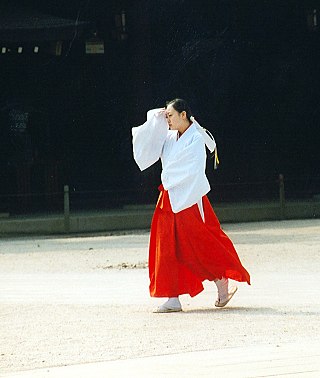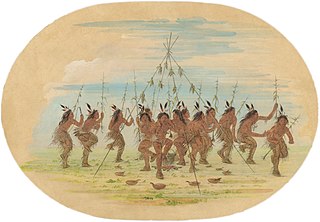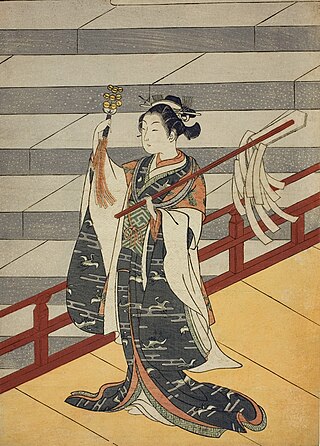Related Research Articles

A parade is a procession of people, usually organized along a street, often in costume, and often accompanied by marching bands, floats, or sometimes large balloons. Parades are held for a wide range of reasons, but are usually celebrations of some kind.

Carnival is a festive season that occurs during the Christian liturgical period of Shrovetide, the three days before Lent. consisting of Quinquagesima or Shrove Sunday, Shrove Monday, and Shrove Tuesday or Mardi Gras.

The Mall is a ceremonial route and roadway in the City of Westminster, central London, that travels 1 kilometre (0.62 mi) between Buckingham Palace at its western end and Trafalgar Square via Admiralty Arch to the east. Along the north side of The Mall is green space and St. James's Palace with other official buildings, and to the south is St James's Park. Near the east end at Trafalgar Square and Whitehall it is met by Horse Guards Road and Spring Gardens, near the west end at the Victoria Memorial it is met by the Constitution Hill roadway and the Spur Road to the street of Buckingham Gate. It is closed to traffic on Saturdays, Sundays, public holidays and on ceremonial occasions.

A miko, or shrine maiden, is a young priestess who works at a Shinto shrine. Miko were once likely seen as shamans, but are understood in modern Japanese culture to be an institutionalized role in daily life, trained to perform tasks, ranging from sacred cleansing to performing the sacred Kagura dance.

The King's Official Birthday is the selected day in most Commonwealth realms on which the birthday of the monarch is officially celebrated in those countries. It does not necessarily correspond to the date of the monarch's actual birth.

The Konbaung dynasty, also known as the Third Burmese Empire (တတိယမြန်မာနိုင်ငံတော်), was the last dynasty that ruled Burma/Myanmar from 1752 to 1885. It created the second-largest empire in Burmese history and continued the administrative reforms begun by the Toungoo dynasty, laying the foundations of the modern state of Burma. The reforms, however, proved insufficient to stem the advance of the British, who defeated the Burmese in all three Anglo-Burmese Wars over a six-decade span (1824–1885) and ended the millennium-old Burmese monarchy in 1885. Pretenders to the dynasty claim descent from Myat Phaya Lat, one of Thibaw's daughters.

Stories and practices that are considered part of Korean folklore go back several thousand years. These tales derive from a variety of origins, including Shamanism, Confucianism, Buddhism, and more recently Christianity.

A procession is an organized body of people walking in a formal or ceremonial manner.

The Green Corn Ceremony (Busk) is an annual ceremony practiced among various Native American peoples associated with the beginning of the yearly corn harvest. Busk is a term given to the ceremony by white traders, the word being a corruption of the Creek word puskita (pusketv) for "a fast". These ceremonies have been documented ethnographically throughout the North American Eastern Woodlands and Southeastern tribes. Historically, it involved a first fruits rite in which the community would sacrifice the first of the green corn to ensure the rest of the crop would be successful. These Green Corn festivals were practiced widely throughout southern North America by many tribes evidenced in the Mississippian people and throughout the Mississippian Ideological Interaction Sphere. Green Corn festivals are still held today by many different Southeastern Woodland tribes. The Green Corn Ceremony typically occurs in late June or July, determined locally by the developing of the corn crops. The ceremony is marked with dancing, feasting, fasting and religious observations.

The Aztec religion is a polytheistic and monistic pantheism in which the Nahua concept of teotl was construed as the supreme god Ometeotl, as well as a diverse pantheon of lesser gods and manifestations of nature. The popular religion tended to embrace the mythological and polytheistic aspects, and the Aztec Empire's state religion sponsored both the monism of the upper classes and the popular heterodoxies.

The Hmong people are an ethnic group currently native to several countries, believed to have come from the Yangtze river basin area in southern China. The Hmong are known in China as the Miao, which encompasses not only Hmong, but also other related groups such as Hmu, Qo Xiong and A-Hmao. There is debate about usage of this term, especially amongst Hmong living in the West, as it is believed by some to be derogatory, although Hmong living in China still call themselves by this name. Throughout recorded history, the Hmong have remained identifiable as Hmong because they have maintained the Hmong language, customs, and ways of life while adopting the ways of the country in which they live. In the 1960s and 1970s, many Hmong were secretly recruited by the American CIA to fight against communism during the Vietnam War. After American armed forces pulled out of Vietnam the Pathet Lao, a communist regime, took over in Laos and ordered the prosecution and re-education of all those who had fought against its cause during the war. While many Hmong are still left in Laos, Thailand, Vietnam, Myanmar, and China, since 1975 many Hmong have fled Laos in fear of persecution. Housed in Thai refugee camps during the 1980s, many have resettled in countries such as the United States, French Guiana, Australia, France, Germany, as well as some who have chosen to stay in Thailand in hope of returning to their own land. In the United States, new generations of Hmong are gradually assimilating into American society while being taught Hmong culture and history by their elders. Many fear that as the older generations pass on, the knowledge of the Hmong among Hmong Americans will die as well.

In traditional Confucian philosophy, Li is an ethical concept broadly translatable as 'rite'. According to Wing-tsit Chan, li originally referred to religious sacrifices, but has come to mean 'ritual' in a broad sense, with possible translations including 'ceremony', 'ritual', 'decorum', 'propriety', and 'good form'. Chan notes that li has "even been equated with natural law." In Chinese cosmology, li refers to rites through which human agency participates in the larger order of the universe. One of the most common definitions of 'rite' is a performance transforming the invisible into the visible: through the performance of rites at appropriate occasions, humans make the underlying order visible. Correct ritual practice focuses and orders the social world in correspondence with the terrestrial and celestial worlds, keeping all three in harmony.

The Arulmigu Sri Mahamariamman Temple is a Hindu temple within George Town in the Malaysian state of Penang. The oldest Hindu temple in the state, it was built in 1833, and features sculptures of gods and goddesses over its main entrance and facade.

Sinhalese New Year, generally known as Aluth Avurudda in Sri Lanka, is a Sri Lankan holiday that celebrates the traditional New Year of the Sinhalese people and Tamil population of Sri Lanka. It is a major anniversary celebrated by not only the Sinhalese and Tamil people but by most Sri Lankans. The timing of the Sinhala Tamil New Year coincides with the new year celebrations of many traditional calendars of South and Southeast Asia. The festival has close semblance to the Tamil New year and other South and Southeast Asian New Years. It is a public holiday in Sri Lanka. It is generally celebrated on 13 April or 14 April and traditionally begins at the sighting of the new moon.

The New Fire Ceremony was an Aztec ceremony performed once every 52 years—a full cycle of the Aztec “calendar round”—in order to stave off the end of the world. The calendar round was the combination of the 260-day ritual calendar and the 365-day annual calendar. The New Fire Ceremony was part of the “Binding of the Years” tradition among the Aztecs.

Kagura is a type of Shinto ritual ceremonial dance. The term is a contraction of the phrase kami no kura, indicating the presence of gods in the practice.

Nuakhai is an agricultural festival mainly observed by people of Western Odisha in India. Nuakhai is observed to welcome the new rice of the season. According to the calendar it is observed on panchami tithi of the lunar fortnight of the month of Bhadrapada or Bhadraba (August–September), the day after the Ganesh Chaturthi festival. This is the most important social festival of Western Odisha and adjoining areas of Simdega in Jharkhand, where the culture of Western Odisha is much predominant.

Kaiane Loise Aldorino Lopez, GMH is a Gibraltarian politician and beauty queen who won Miss World 2009. From 2017 to 2019, she held the ceremonial position of Mayor of Gibraltar, after previously serving as Deputy Mayor since 2014.
Mun or Munism is the traditional polytheistic, animist, shamanistic and syncretic religion of the Lepcha people. It predates the 7th century Lepcha conversion to Lamaistic Buddhism, and since that time, the Lepcha have practiced it together with Buddhism. Since the arrival of Christian missionaries in the nineteenth century, Mun traditions have been followed alongside that religion as well. The traditional religion permits incorporation of Buddha and Jesus Christ as deities, depending on household beliefs.
Weddings in Myanmar, considered auspicious occasions in Burmese culture, reflect various ethnic, religious, and regional traditions. Depending on an individual's family social economic status, personal preferences and titles held, Burmese weddings can be religious or secular, and extravagant or simple. Wedding expenses are covered by the groom's family. Myanmar is a predominantly Buddhist country, and many wedding customs and traditions are influenced by Buddhism.
References
- ↑ Carr, C. (1993). On Edge: Performance at the End of the Twentieth Century. Wesleyan University Press. p. 88. ISBN 978-0-8195-6269-2.
- 1 2 Donnahenes.net
- ↑ "The Queen of My Self". thequeenofmyself.com. Archived from the original on 2018-08-23. Retrieved 2023-08-07.
- ↑ Montano, Linda (2001). Performance Artists Talking in the Eighties. University of California Press. p. 376. ISBN 978-0-520-21022-6.
- ↑ "Gothamist: Donna Henes, Urban Shaman". Archived from the original on 2008-07-09. Retrieved 2009-03-26.
- ↑ Znamenski, Andrei A. (2007). The Beauty of the Primitive: Shamanism and Western Imagination. Oxford University Press. p. 264. ISBN 978-0-19-517231-7.
This article includes a list of general references, but it lacks sufficient corresponding inline citations .(April 2009) |
- Daily News (New York)|Daily News, April 16, 1996
- The Village Voice, February 3, 1998
- Mayoral Citation - December 4, 1989
- Mayoral Citation - August 23, 1984